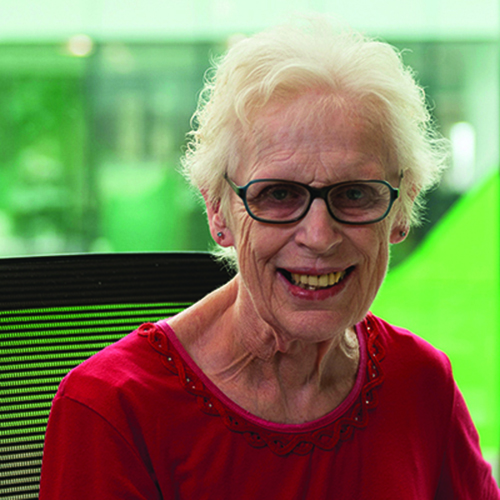Search
Showing results for "rett"
Research
Evaluating the Extent of Clinical Uncertainty Among Treatment Options for Patients with Early-Onset ScoliosisThe objective of this study was to evaluate areas of clinical uncertainty among pediatric spine surgeons regarding the treatment of early-onset scoliosis.
Research
Epilepsy and mental retardation limited to females with PCDH19 mutations can present de novo or in single generation familiesEpilepsy and mental retardation limited to females (EFMR) is an intriguing X-linked disorder affecting heterozygous females and sparing hemizygous males.
Research
Rare childhood diseases: how should we respond?Paradoxically, rare diseases are common, collectively affecting 6-10% of the population and have a huge impact on patients and families, health services,...

The Kids Research Institute Australia disability researcher, Associate Professor Helen Leonard, played an important role in the identification of the differences that define CDD, thanks to her extensive experience researching Rett syndrome and running an Australian online database tracking Rett cases.
Research
Deletions in the CDKL5 5 untranslated region lead to CDKL5 deficiency disorderPathogenic variants in the cyclin-dependent kinase-like 5 (CDKL5) gene are associated with CDKL5 deficiency disorder (CDD), a severe X-linked developmental and epileptic encephalopathy.
Research
Using a trauma informed practice framework to enhance understanding of and identify support strategies for behavioural difficulties in young people with Prader-Willi syndromeBehavioural support for young people with Prader-Willi syndrome (PWS) is necessary in home and school environments. The Trauma Informed Practice (TIP) framework has been used to support young people with complex behavioural needs in school settings. To identify parent and professional perspectives on behavioural challenges experienced by young people with PWS and strategies for supports, to inform understanding of how they are aligned with the TIP framework.
Research
Description of Total Population Hospital Admissions for Treacher Collins Syndrome in AustraliaTo describe patterns and demographic characteristics of total-population hospital admissions with a diagnosis of Treacher Collins syndrome (TCS) in Australia.
Research
Comparing home polysomnography with transcutaneous CO2 monitoring to laboratory polysomnography in children with neuromuscular disordersClinical utility of home polysomnography in children with neuromuscular disorders is limited by lack of evidence that sleep-disordered breathing can be reliably identified and inability to diagnose hypoventilation because carbon dioxide is not measured.
Research
Can Wearable Inertial Measurement Units Be Used to Measure Sleep Biomechanics? Establishing Initial Feasibility and ValidityWearable motion sensors, specifically, Inertial Measurement Units, are useful tools for the assessment of orientation and movement during sleep. The DOTs platform (Xsens, Enschede, The Netherlands) has shown promise for this purpose. This pilot study aimed to assess its feasibility and validity for recording sleep biomechanics.
Research
Evolving Trends of Gastrostomy Insertion Within a Pediatric PopulationNew gastrostomy insertion among children who require long-term enteral feeding support increased over the study period
